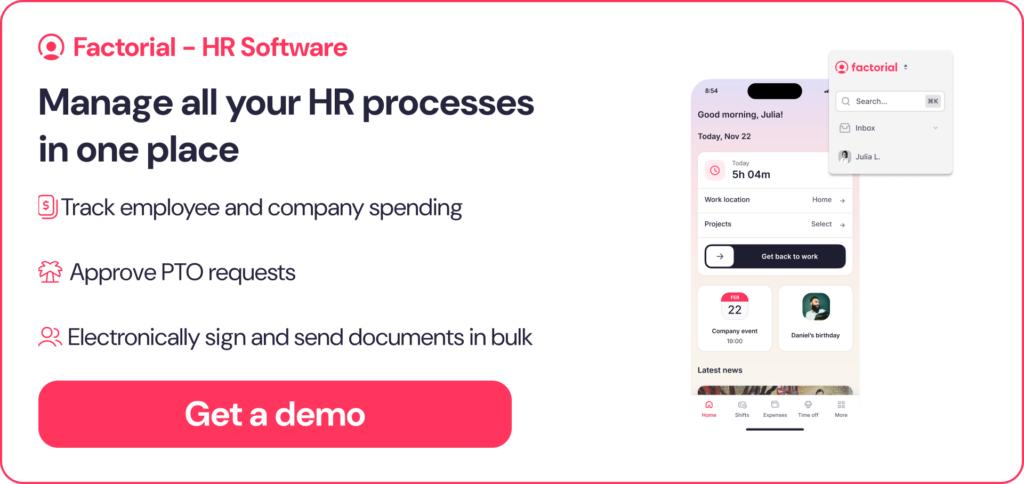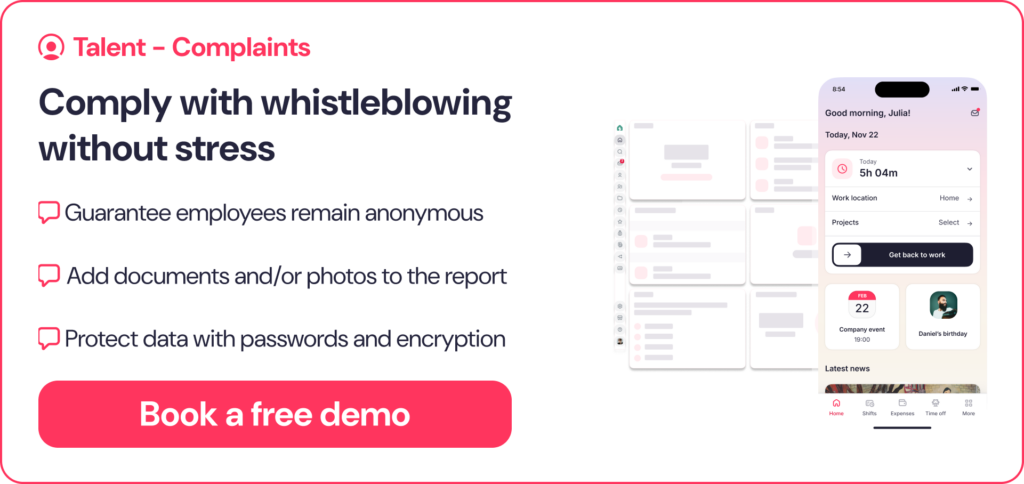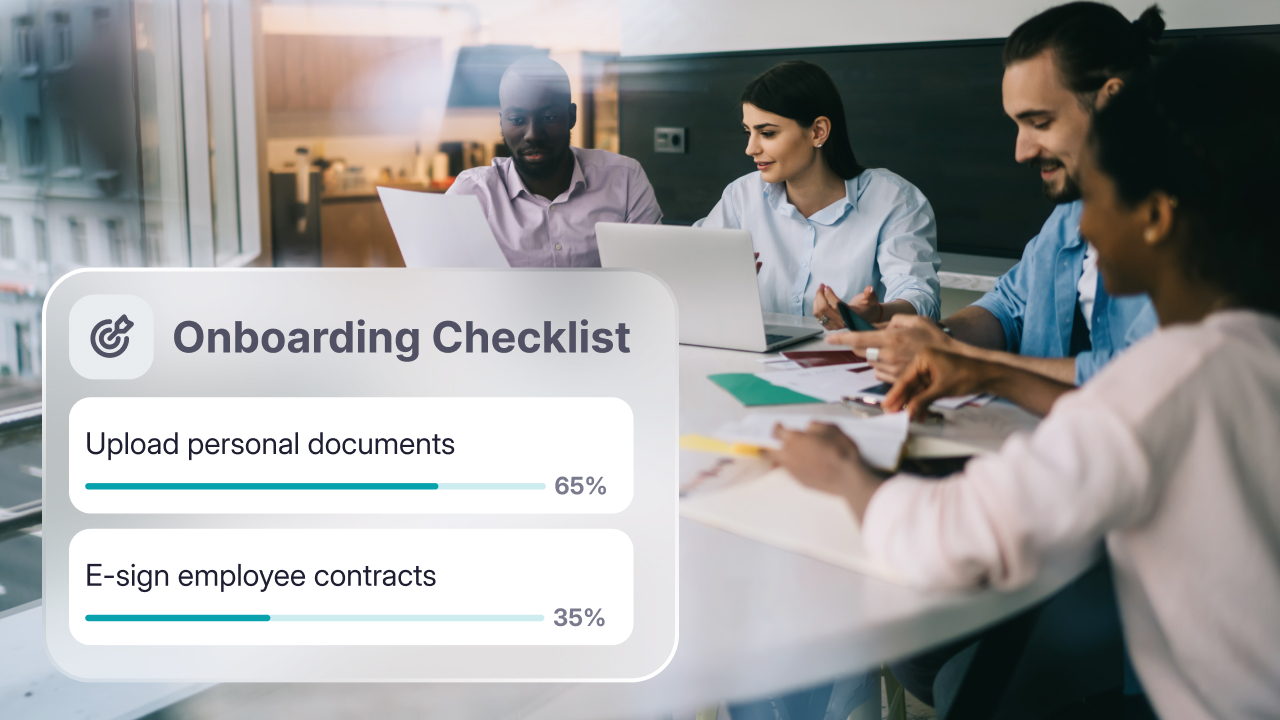You may have been asked to write your own personal development plan, or you may be involved in helping your direct reports write their own. Either way, if you are wondering exactly what a personal development plan is and what you should to include in one, read on to learn more.
TABLE OF CONTENTS
- What is a Personal Development Plan?
- Benefits of having a Personal Development Plan
- How to Write a Personal Development Plan
- Tips for Working on your PDP
- Transform your business with Factorial 🚀
What is a Personal Development Plan?
A personal development plan, often abbreviated as a PDP, is a structured document that includes an individual’s goals, skills, strengths, areas for improvement, and the steps identified to achieve personal or professional growth.
A PDP helps an individual:
- Reflect on where they are currently and what is important to them
- Clarify the goals they want to achieve
- Provide a way to track their progress
- Keep motivated to change
Individuals may create a personal development plan for their personal or professional life. Here, we are focussing on PDPs created for professional work.
Benefits of Having a Personal Development Plan
For individual employees, having a PDP can be beneficial because it helps them to understand where they are, where they want to be and how they can get there.
From an organisational perspective, personal development plans build on the performance management process to provide a good method and framework for understanding employees better. Knowing the goals and ambitions of individuals within the workforce can be a powerful tool for motivating employees, improving employee engagement and productivity, and building a company culture that helps employees thrive.
Ultimately, a personal development plan can:
- Motivate employees: PDPs provide a clear path that employees can accomplish and further their careers.
- Improve productivity: There’s no more guessing what tasks or skills an employee should focus on since PDPs outline exactly what steps they should take.
- Create accountability: Creating goals with deadlines ensures employees stick to their schedule, and when they don’t, it holds them accountable.
- Enable skills development: Typically, PDPs include tasks that challenges employees to learn or improve their skills.
How To Write A Personal Development Plan
While a professionally focused personal development plan will need input from the employer, it should first and foremost be created and populated by the employee. A PDP is primarily a document that exists to help an individual, so the drive to write it should come from them.
You may be encouraged to use a company template when you write your personal development plan. Templates can make it easier for leaders in the organisation to read and absorb the information in the document, as they are familiar with the layout.
If you are creating your own PDP from scratch, the following headings can be a helpful starting point:
1. Personal Information
- Name:
- Date:
- Current Role:
- Future Aspirations:
Future aspirations can be short, medium and long-term. You might want to include roles you aspire to perform and specific skills and experience you would like to accumulate. For example, for some people, future aspirations might be to ‘lead a ten-person team’. For others, it might be ‘produce a podcast that focuses on our industry’.
2. Self-Assessment
- Strengths
- Areas for Development
Use your performance reviews and any other feedback you have received to populate this section. It can be difficult to not take constructive criticism personally, but try to be as reflective and self-aware as possible. If you are open to understanding where you need to strengthen your skills, you are more likely to make the progress you want to.
3. Goals
Create a table or list of your goals. Where possible, these should be SMART (Specific, Measurable, Achievable, Relevant, Time-bound). Then sit down and work out what exactly how you are going to meet each goal – think about what you need to do, how long you think it will take, any sub-objectives that you need to achieve as part of meeting the overall goal and how you will measure success.
When thinking about your goals and how you will meet them, what you need might be a combination of training courses, online resources, mentorship and specific opportunities. How you manage your time to achieve these goals also needs careful consideration. Overwhelming yourself with too many additions to your To Do list will not help you achieve your aims.
It can be helpful to create the list and come back to it over a few days as ideas or thoughts occur.
If you are creating a table to keep track of your goals, it could look something like this:
| Objective | Reason | Actions | Success Measure | Deadline |
| Develop leadership skills | To be in a strong position for a managerial position | Take a leadership course
Read a book on leadership |
Demonstrate leadership skills on a project | 1 year |
| Build confidence in larger meetings | To demonstrate my skills and experience to the wider team | Allocate time for pre-reading and preparation | Actively contribute to two larger meetings | 3 months |
4. Resources & Support Needed
List all the resources you can use and the support you might want from your manager, mentor or other colleagues. This part of your PDP could include:
- Links to online courses, such as Coursera
- Relevant books, podcasts or YouTube channels you could consult
- Mentoring opportunities
- Apps to help with time management and planning
Tips for Working with your Personal Development Plan
Personal development plans are great to create an action plan for professional growth; however, once you develop one, the work doesn’t stop there. Ensure that you and your employer are on the same page in regards to your PDP. And once you are happy with your PDP, it’s a good idea to:
- Share it with your manager, mentor and anyone else who you trust to support you in the process. Sharing the document encourages you to be accountable which can support motivation to continue.
- Keep it tidy and up-to-date. Invest in your PDP and you set the tone that you are investing in yourself. It should be easy to read and to follow, kept up-to-date at all times, and regularly reviewed to make sure you are on track.
- Celebrate when you achieve a goal. Your hard work is paying off so make sure you take time to recongise it, no matter how small the achievement.
- Revise it every so often. As you grow and continue to improve your skills, there’ll be new skills to develop and learn.



